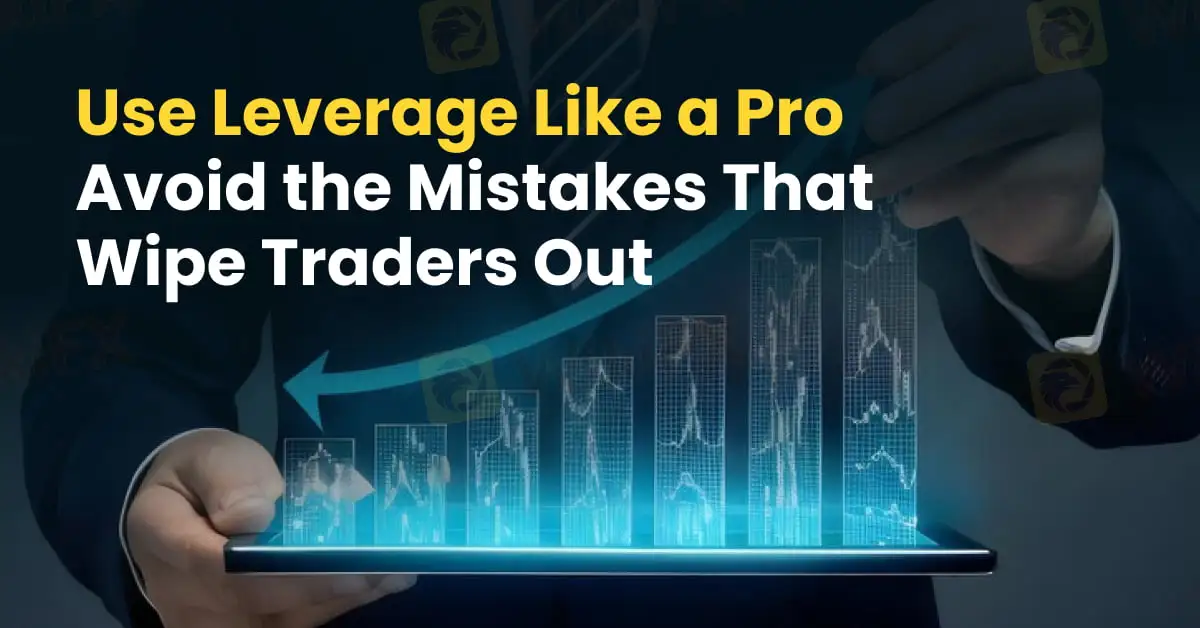简体中文
繁體中文
English
Pусский
日本語
ภาษาไทย
Tiếng Việt
Bahasa Indonesia
Español
हिन्दी
Filippiiniläinen
Français
Deutsch
Português
Türkçe
한국어
العربية
Use Leverage Like a Pro | Avoid the Mistakes That Wipe Traders Out
Abstract:In the high-stakes world of financial trading, leverage is a potent instrument that enables traders to punch well above their financial weight. By allowing market participants to control larger positions with a relatively small outlay of capital, leverage opens the door to potentially outsized returns. But it is not without peril as amplified gains also come with amplified losses, and understanding how leverage works is crucial for anyone stepping into leveraged markets.

In the high-stakes world of financial trading, leverage is a potent instrument that enables traders to punch well above their financial weight. By allowing market participants to control larger positions with a relatively small outlay of capital, leverage opens the door to potentially outsized returns. But it is not without peril as amplified gains also come with amplified losses, and understanding how leverage works is crucial for anyone stepping into leveraged markets.

At its core, leverage refers to borrowing funds, typically from a broker, to increase the size of a trading position. It's commonly expressed as a ratio, such as 10:1, which means for every $1 of personal capital, the trader controls $10 in the market. This ability to command larger sums with minimal upfront investment enhances capital efficiency but simultaneously increases financial exposure.
Leverage finds broad application across asset classes. In the forex market, its not unusual to see leverage ratios as high as 50:1, particularly in jurisdictions with looser regulatory environments. This allows a trader with $1,000 to control $50,000 in currency exposure. In contrast, shares CFDs might offer 2:1 leverage, while commodity contracts, like crude oil or gold, also frequently involve high leverage levels.

Used wisely, leverage can be a powerful ally. A modest price move in a leveraged position can result in substantial profit. For instance, a 1% gain in an asset value translates into a 10% gain on capital at a 10:1 leverage ratio. This is particularly appealing to short-term traders seeking quick returns on limited capital.
However, the same mechanics apply in reverse. That same 1% move against the trader can equate to a 10% capital loss. Add in market volatility, and losses can quickly spiral. If the value of the position falls too far, brokers may issue margin calls, which are demands for additional funds to keep the position open or close the trade altogether, locking in losses.
Mitigating these risks demands a disciplined approach. Sound risk management strategies are vital, such as using stop-loss orders, diversifying across asset classes, and actively monitoring positions. Traders must also educate themselves on how leverage interacts with market conditions and price swings.
Its equally important to understand that leverage limits and margin requirements vary depending on jurisdiction. Regulators like the European Securities and Markets Authority (ESMA) or the U.S. Commodity Futures Trading Commission (CFTC) impose strict leverage caps to protect retail investors. These safeguards reflect just how risky unbridled leverage can be.
Leverage is not inherently good or bad. Its a neutral tool that magnifies outcomes. For the savvy, well-prepared trader, it offers a way to optimise returns and utilise capital efficiently. For the unwary or overconfident, it can result in swift and devastating losses. Knowing when and how to deploy leverage is one of the most important decisions a trader can make. In the end, success with leverage hinges not on bravado, but on strategy, discipline, and a clear-eyed view of risk.

Disclaimer:
The views in this article only represent the author's personal views, and do not constitute investment advice on this platform. This platform does not guarantee the accuracy, completeness and timeliness of the information in the article, and will not be liable for any loss caused by the use of or reliance on the information in the article.
Read more

SkyLine Judge Community: Appreciation Dinner Successfully Held in Malaysia
On August 1, 2025, the SkyLine Judge Appreciation Dinner was successfully held in Kuala Lumpur, Malaysia. As the first WikiFX SkyLine event in Malaysia this year, the dinner not only aimed to express sincere gratitude to expert judges, partners, and industry representatives who have long supported the development of the SkyLine Judge Community but also facilitated in-depth discussions on the future direction of forex trading safety, financial education, and industry transparency.

AssetsFX Scam Alert: 5 Troubling Signs
Forex trading has become a critical game now because of advancements in technology. Due to this Unfortunately, scam brokers have also entered in the Forex market. Therefore, you need to stay alert. This article aims to warn all traders and investors. Read carefully and stay aware.

Forex4Money: Where Your Money Goes In, But Never Comes Out!
Discover how Forex4Money traps investors with fake profit promises and blocked withdrawals. Read real complaints and protect yourself from this unregulated forex scam.

Forex Success Stories: Lessons You Can Use to Win
There can be many ups and downs even for the world’s best forex traders. However, they remain undeterred in their vision to overcome the challenges that come their way. That’s why they form part of forex success stories that continue to inspire generations. One can inherit some lessons to be among successful currency traders. In this article, we will be sharing the lessons you can use to be successful in forex trading.
WikiFX Broker
Latest News
Euro zone inflation holds steady at higher-than-expected 2% in July
Forex Success Stories: Lessons You Can Use to Win
Scam Alert: FCA Issued Warning! Check the List of Unauthorized Brokers Below!
FCA Forex Trading Regulations Explained – What Every Trader and Broker Must Know
FIBO Group: A Closer Look at Its Licenses
Making Money with Forex Weekend Trading
Interactive Brokers Expands Forecast Contracts to Europe
Robinhood Gains 2.3M New Accounts, Platform Assets Close to $280B
CVS shares pop on earnings beat and outlook, as retail pharmacy and insurance units improve
CNBC's Inside India newsletter: Why an India-U.K. trade deal does not make U.S.-India agreement any easier
Currency Calculator


